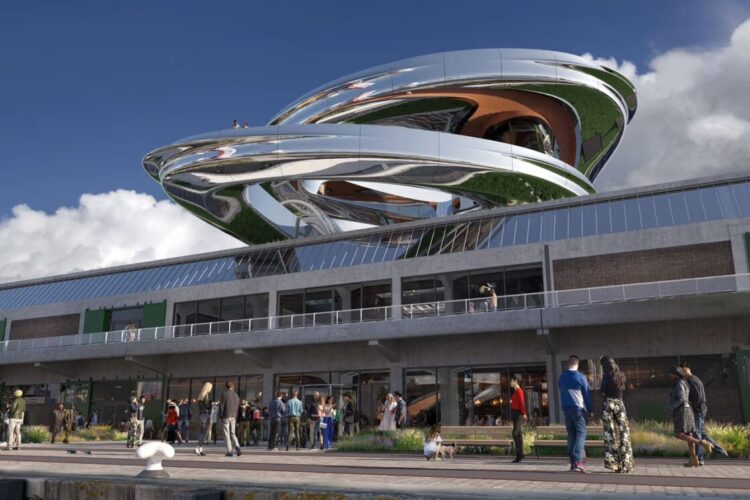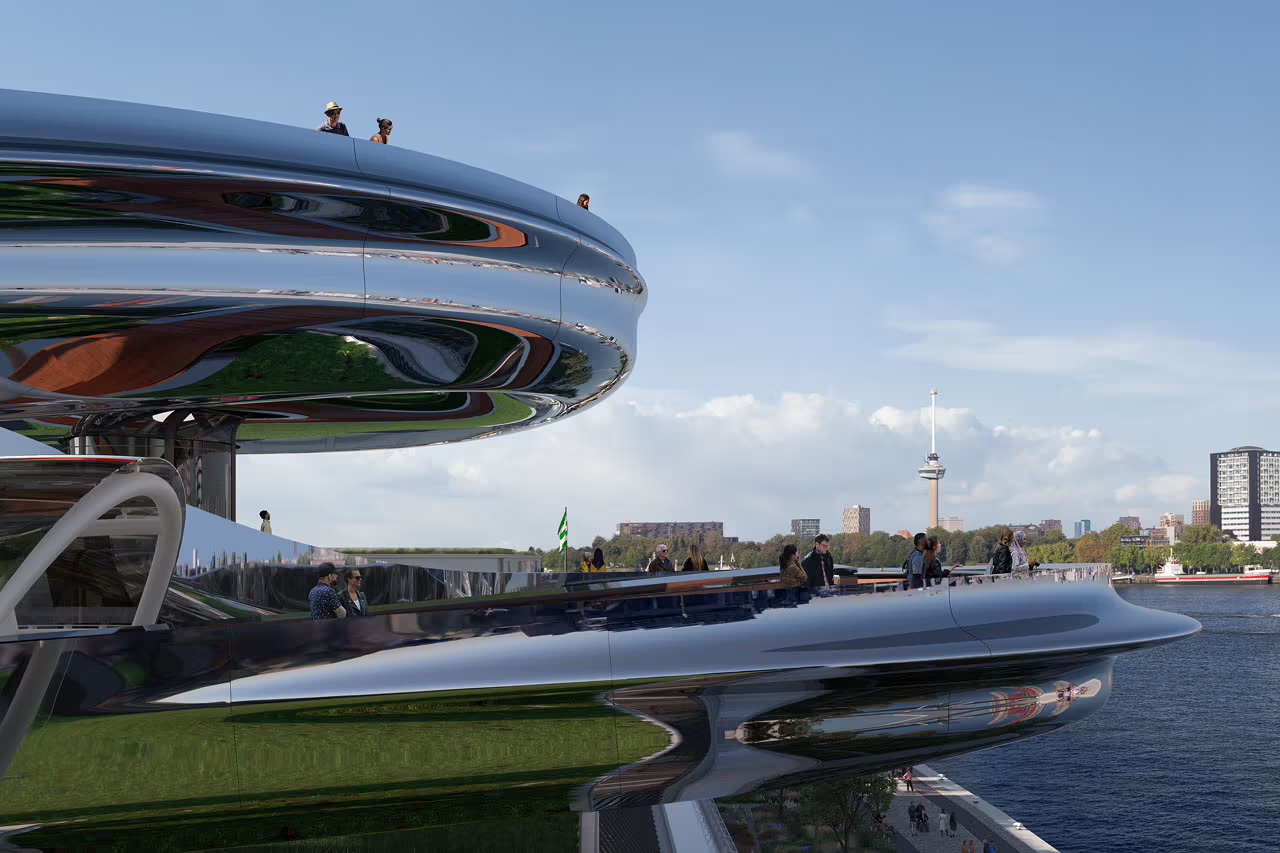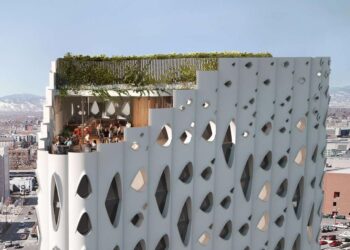The Fenix Museum of Migration, inaugurated on May 16, 2025, in Rotterdam, Netherlands, stands as a pioneering institution dedicated to exploring the multifaceted narratives of human migration through art and history. Situated in the historic Katendrecht district, this museum occupies a restored 1923 warehouse that once served as a departure point for countless European emigrants seeking new lives across the Atlantic. Through its innovative architecture and immersive exhibitions, Fenix offers visitors a profound insight into the journeys, challenges, and contributions of migrants worldwide.
Architectural Marvel: The Tornado Staircase
At the heart of Fenix’s architectural design is the striking “Tornado” staircase, a 30-meter-tall double-helix structure crafted from 297 polished stainless-steel panels. Designed by Ma Yansong of MAD Architects, this spiraling staircase symbolizes the dynamic and often turbulent paths of migration. Visitors ascending its 336 steps are rewarded with panoramic views of Rotterdam and the Maas River, offering a moment of reflection on the journeys undertaken by migrants throughout history.
Historical Significance of the Location
The museum’s location is steeped in migratory history. The building, formerly known as the San Francisco warehouse, was integral to the operations of the Holland-America Line, facilitating the movement of millions of Europeans to the Americas in the late 19th and early 20th centuries. Notable figures such as Albert Einstein and Willem de Kooning embarked on their journeys from this very quay, embedding the site with rich historical resonance.
Inaugural Exhibitions: A Deep Dive into Migration
Fenix’s opening features three compelling exhibitions that delve into various aspects of migration:
A. All Directions: Art That Moves You
This exhibition showcases over 150 artworks and objects from international artists, including Francis Alÿs, Cornelia Parker, and Do Ho Suh. Through diverse mediums, the exhibition explores themes of displacement, identity, and the human spirit’s resilience. Noteworthy installations include a fragment of the Berlin Wall and a Lampedusa migrant boat, serving as poignant reminders of the physical and emotional barriers faced by migrants.
B. The Family of Migrants
Inspired by Edward Steichen’s “The Family of Man,” this photographic exhibition presents 194 images from 55 countries, capturing the diverse experiences of migrants. From intimate family portraits to scenes of departure and arrival, the collection offers a global perspective on migration’s personal and communal impacts.
C. The Suitcase Labyrinth
An immersive installation comprising 2,000 donated suitcases, each representing individual migration stories dating back to 1898. As visitors navigate the labyrinth, audio narratives reveal the hopes, fears, and aspirations contained within each suitcase, providing a tangible connection to the migrant experience.
Community Engagement and Cultural Integration
Beyond its exhibitions, Fenix serves as a cultural hub for Rotterdam’s diverse population. The museum’s ground floor features a 2,275-square-meter indoor plaza, “Plein,” designed to host public programs, performances, and community gatherings. This space fosters dialogue and understanding among visitors of all backgrounds, reinforcing the museum’s mission to celebrate migration as a fundamental aspect of human history.
Funding and Support
The realization of Fenix was made possible through the support of the Droom en Daad Foundation, established in 2016 by former Rijksmuseum director Wim Pijbes. The foundation’s commitment to cultural enrichment and historical preservation has been instrumental in bringing this visionary project to life.
Conclusion
The Fenix Museum of Migration stands as a testament to the enduring human journey of migration. Through its evocative architecture, thought-provoking exhibitions, and community-centered approach, Fenix invites visitors to reflect on the complexities of migration and its profound impact on societies worldwide. As a beacon of understanding and empathy, the museum underscores the importance of recognizing and honoring the diverse narratives that shape our global community.









